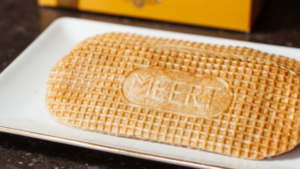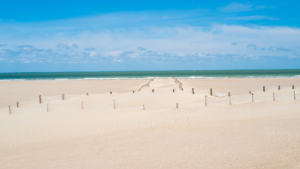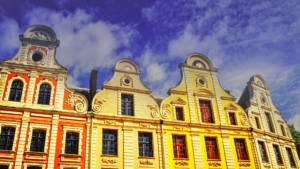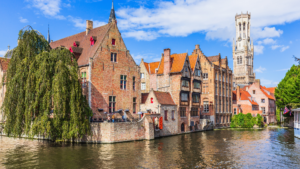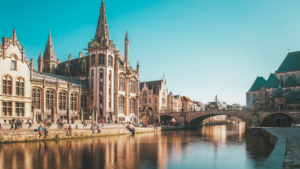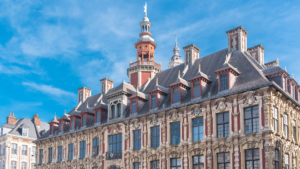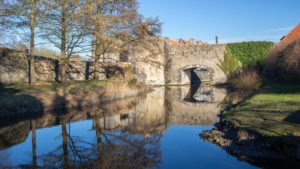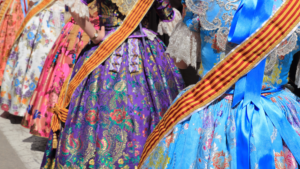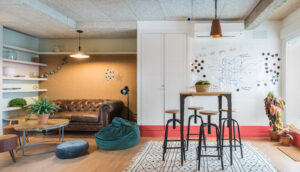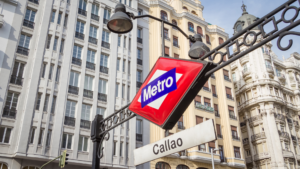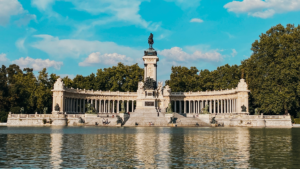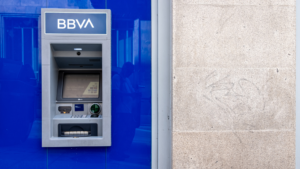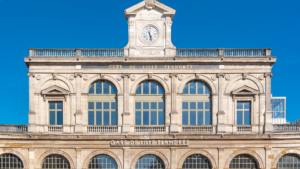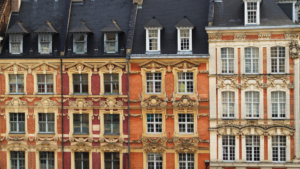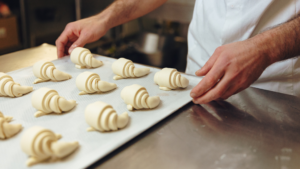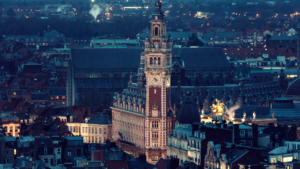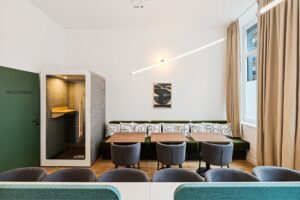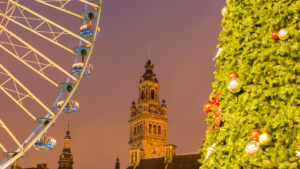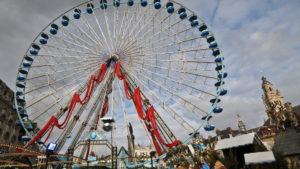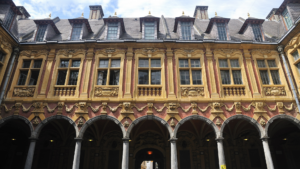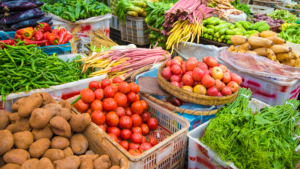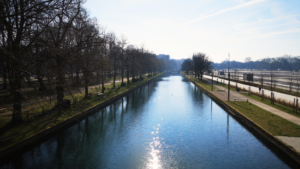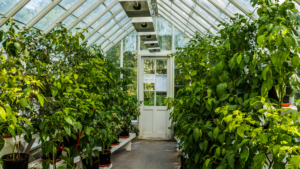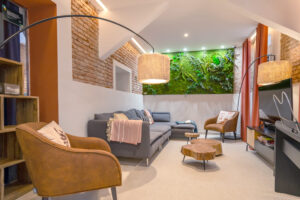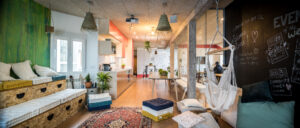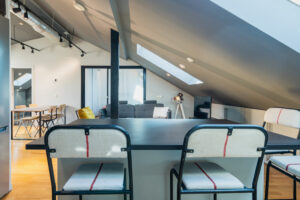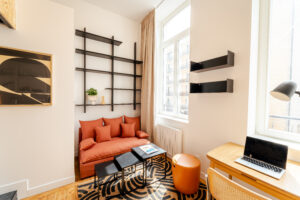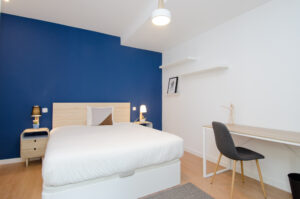Calling all coffee fanatics!
Lille has a rich coffee culture that pervades the entire city. From the cozy corners of family-run establishments to the hearty warmth of more traditional cafés, Lille’s coffee shops offer a unique blend of flavors, aromas, and experiences. Let’s delve into the top 10 coffee shops in Lille that are sure to satisfy your craving for caffeine.
1. Aux Merveilleux de Fred: The Most Traditional

Since its inception in 1997, Aux Merveilleux de Fred has become a staple of Lille’s coffee shop scene, celebrated for its exquisite “Merveilleux” pastry. This café has multiple locations peppered across the city, including one close to our Urban Campus Saint So’ Coliving.
The allure of freshly made baked goods, visible through a quaint window, captivates every passerby. We recommend indulging in the “Le Merveilleux,” a delightful concoction of meringue. Don’t forget to ask for the secret cream, available in flavors like speculoos, coffee, vanilla, and chocolate.
- Location: 336 Rue Léon Gambetta, Lille
2. Cafés Méo: The Most Local

Rooted in the 1920s, Cafés Méo epitomizes the tradition of fine coffee in the North of France. Its inaugural shop in Lille, opened in 1928, stands as a monument to coffee excellence, inviting aficionados to savor its premium beans. If you want to connect with the city’s history and time-honored establishments, this is a must-visit.
- Location: 5 Pl. du Général de Gaulle, Lille
3. La Clairière: The Most Vegan Friendly
La Clairière is a hotspot for those seeking vegan, local, and organic options in an intimate setting. This place is known for its lively Sunday brunches and colorful dishes. Plus, it is animal friendly, so you can bring all of your furry friends!
- Location: 75 Bd de la Liberté, Lille
4. Elizabeth’s: The Most British
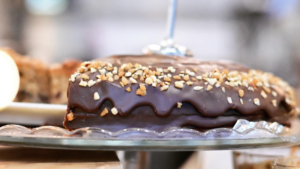
At Elizabeth’s, the charm of British baking takes center stage. Famous for its homemade scones, brownies, and cookies, this tiny café is a cozy retreat. A cup of tea and salted butter scone at Elizabeth’s certainly will not disappoint.
- Location: 69-71 Rue Basse, Lille
5. Café Augustin: The Closest to Urban Campus

Just a short walk from Urban Campus Saint So’, Lille Coliving, Café Augustin is a versatile space for work, relaxation, and coffee exploration. You can go for just a small snack and espresso, or try some of their beautifully plated entrees like creamy polenta or soft-boiled eggs.
- Location: 57 Rue de Valenciennes, Lille
6. Coffee Makers: The Most Coffee Focused
Coffee Makers is where the love for coffee is joyously celebrated. They have a top-quality coffee menu, plus food selections ranging from cinnamon toast to homemade granola. If you are looking for that irresistible scent of freshly roasted beans, Coffee Makers is your place.
- Location: 151 Rue Pierre Mauroy, Lille
7. Oxalis & Bergamote: The Best for Cheesecake
Oxalis & Bergamote stands out for its high-quality pastries, not to mention its elegant environment. A favorite among locals, this spot offers a refined café experience, blending delicious sweets with a sophisticated vibe.
- Location: 44 Rue d’Angleterre, Lille
8. L’impertinente: The Trendiest

Dubbing itself a “Pony-club” rather than a mere coffee shop, L’impertinente adds a dash of fun to the coffee scene. The interior is decorated with bright colors and patterns, which also translate to their gorgeously decorated cakes and pastries.
- Location: 9 Bd Papin, Lille
9. Briocherie Sylvana: The Most Specialized

For freshly baked brioche, Briocherie Sylvana is a dream. With a variety of both sweet and salty options, they have a large menu with all different flavors of cakes, muffins, pastries, and much more. This is the perfect place to indulge in your sweet tooth alongside a warm cup of delectable coffee.
- Location: 24 Bd Victor Hugo, Lille
10. Meert 1677: The Oldest
Meert 1677, the oldest coffee shop in Lille, offers a luxurious dive into the city’s rich café culture. Known for its vanilla waffles, Meert is a testament to the timeless appeal of fine patisserie and coffee, despite the tourist lines. If you want to experience all of the essentials of Lille, a visit to Meert needs to be on your list.
- Location: 25-27 Rue Esquermoise, Lille
French Café Culture

In France, café culture is an essential part of daily life, reflecting the country’s appreciation for good coffee, leisure, and community. Unlike in many other places, traditional French cafés are not just spots to grab a quick caffeine fix; they are places where people come to relax, meet with friends, or even conduct business meetings. This culture thrives on the principle of taking one’s time, whether it’s for a morning espresso or an afternoon pause.
In Lille, this tradition is evident in the diversity and character of its coffee shops, each telling a part of the city’s story. They serve as communal hubs that reflect the local lifestyle, where the emphasis is on the quality of the coffee and the warmth of the welcome. Moreover, Lille’s café culture mirrors the city’s blend of tradition and modernity, showcasing how contemporary trends in coffee preparation and consumption have been seamlessly integrated into the historic fabric of French society.
Want to read more about Lille?
- Discover the Best Trips from Lille, France
- Must Do’s if you live in Lille, France
- La Braderie de Lille
- The Top 5 Vegan Restaurants in Lille
- The Best After-Work Spots in Lille
- From Lille to the Dunkirk Carnival
Photo Credits:
- Photo 1: Aux Merveilleux de Fred Instagram – see original post
- Photo 2: Canva Free Media License
- Photo 3: La Clairière Instagram – see original post
- Photo 4: Elizabeth’s Instagram – see original post
- Photo 5: Café Augustin Instagram – see original post
- Photo 6: Coffee Makers Instagram – see original post
- Photo 7: Oxalis & Bergamote Instagram – see original post
- Photo 8: L’impertinente Instagram – see original post
- Photo 9: Briocherie Sylvana Instagram – see original post
- Photo 10: Meert 1677 Instagram – see original post
- Photo 11: Canva Free Media License



